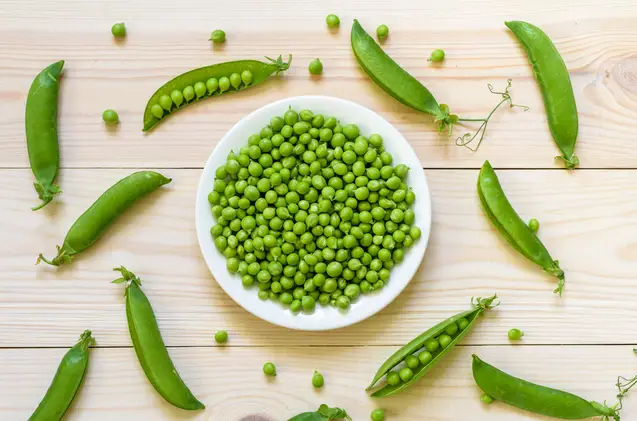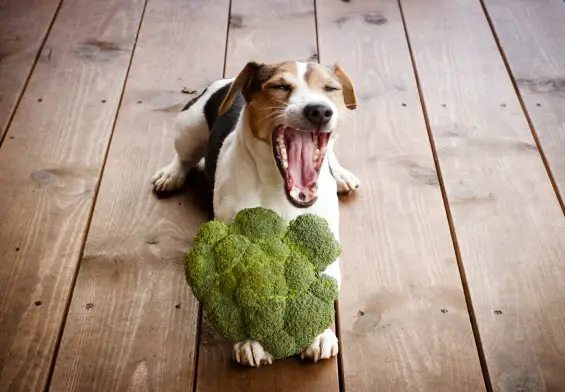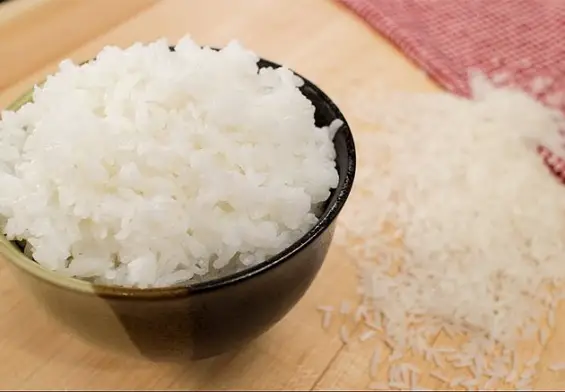Is it Safe for Dogs & Puppies to Have Snow & Sugar Snap Peas?
Did you return from the market with some snap peas and have been enjoying the deliciousness all alone? Ok, how about you let your loyal canine friend share this meal with you since you can’t eat everything after all. Is it a good idea to give snap peas to dogs? Find out the answers to these questions and many more as you keep reading.
Are Snap Peas OK for Dogs?
Dogs love peas, so it is no coincidence that most commercial dog foods have peas listed as an ingredient. Snap peas are no different; to put it simply, Dogs can eat snap peas. Since we have established that snap peas are safe for dogs, let’s see if it offers any health benefits and nutritional value to your dog.
Pisum Satvium or snap peas can sometimes be called sugar peas or snow peas. Each pod of snap peas may have up to 8 peas, and they are mostly grown in Colombia, Kenya, Guatemala, China, and Peru.
Nutritional Value of Snap Peas
According to the experiment, there are 2.6g of fiber, 7.55g of carbohydrates, 2.8g of protein in 100g of snap peas. The essential vitamins also include folate, Vitamin C, Vitamin B5, Vitamin E, Vitamin A, and Vitamin K. It is also rich in minerals such as iron, magnesium, manganese, calcium, and copper. In addition to this, snap peas contain lutein, an important antioxidant necessary for the health of your dog’s skin, heart, and eyes.
What Amount of Sugar Snap Peas is Safe for Dogs?
Dogs can do without veggies in their diet since their primary nutritional need is protein. However, snap peas are great as treats for your dog. Now, the issue lies in how many of these snacks they can have. Giving about four peas at once, once a week is highly recommended.
Serving Snow Snap Peas to Your Dog
Since we have established that snap peas are great as an occasional treat for dogs, the next question is, how do you serve it to your dogs? The first way we recommend is by chopping the peas into smaller pieces and placing them on top of your dog’s meal as a topper.
You can also use the peas as ingredients inside your dog’s homemade food. The last way is to give it to your dog whole after washing. The pea pods may be a choking hazard to your dog, so it is best practice to chop off the pods before giving them to your dog.
Apart from the potential choking hazard, the pod can also lead to blockage in smaller dog breeds’ intestines. Therefore, if your dog belongs to a breed that is usually small in size, it will be best for you to chop the peas into smaller pieces before serving.
Throw away any leftover peas once your dog is done eating, mostly if the peas were cooked with seasoning. Also, as with any other food, when you are about to introduce snap peas to your dog, do not hurry. Give it a little and observe for a while to see if it will manifest any diarrhea symptoms or vomiting. Should you observe any allergy or food reaction signs, suspend giving your dog snap peas while you consult with a vet for further clarifications.
What Dogs Should Never Eat Snap Peas?
Snap peas are great low-calorie diets for your dog, and if that is your goal, you can let it have some. However, some certain dogs should never be given snap peas, for example, a dog with a history of kidney problems. Snap peas are rich in purines, a compound that produces uric acid, which your dog’s kidney will have to flush. Since the kidney is not functioning correctly, uric acid’s high production could lead to the formation of kidney stones and related complications.
Conclusion
Most dogs will eat snap peas without experiencing any form of complications. After all, peas are major ingredients used in the preparation of dog food by commercial brands( you will confirm this when you refer to the container label of the dog food) .
However, you should moderate the amount of it that your dog can have per time. Although snap peas are rich in minerals, fibers and vitamins. The pods of the peas can pose a choking hazard or even blockage of the intestinal in smaller dogs. Snap peas are not recommended for dogs that have a history of kidney problem, due to the presence of purine in it.





